Search Results
Fine Jewelry University Articles matching: “18kt fl”
Showing only FJU Article results. Click here to show all results.
Fine Jewelry University (Show All FJU Articles)
-
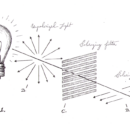
The Magic of Polarized Light
… light. In the gemological world, this would be any light source that we use on a regular basis (e.g. overhead reflected light or a daylight equivalent fluorescent light source). Polarized light, on the other hand, has all of the … of this in nature is sunlight reflecting off of the water. When the light bounces off of the surface, that reflected light is partially polarized. This is because some of the rays pass through the water, and some of them reflect. In a …
-
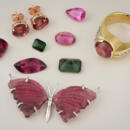
Gem in the Spotlight: Tourmaline
Tourmaline is one of the most beautiful gems that you’ve probably never heard of. Less popular than the likes of ruby or sapphire, tourmaline flies under the radar in the gem world and remains the best kept secret of gem collectors and connoisseurs who appreciate its unique properties and stunning array of colors. In fact, tourmaline is found in almost any color you can …
-
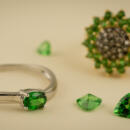
Gem in the Spotlight: Tsavorite Garnet
…nomenclature of gemstones follows certain rules, and according to modern mineralogical methods, gemstones are given a name which ends in “-ite”. In honor of the Tsavo National Park where it was discovered and the Tsavo River which flows through it, the gem received the name Tsavorite. It is also less commonly referred to as Tsavolite. Mythology and Lore Unlike many of the other gemstones we write about, Tsavorite does not have a rich history or lore, given its recent …
-
Frequently Asked Question about Jewelry
… refers to how clean, or free of imperfections a Diamond is. The GIA standard for the clarity scale consists of: FL, IF, VVS1, VVS2, VS1, VS2, SI1, SI2, ???, I1, I2, I3 The SI3 was born out of the desire of the Diamond Industry to …bands. A Comfort Fit Ring is beveled inside, in that manner the edges of the ring are not in direct contact with the flesh of the finger, resulting in a more comfortable fit. This might result in the feeling that the ring feels “looser…
-
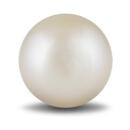
Gem in the Spotlight: Pearl
… are grown against the inside shell of a mollusk, rather than within the body of the mollusk itself. This creates a flat, rounded pearl that has a distinctive shape and appearance. Mabe pearls are typically used in jewelry designs that …pearls are those with a pure, even color, such as white, pink, or silver. Luster: Luster is the intensity of light reflected from a pearl’s surface. Pearls with excellent luster have sharp bright reflections on the surface. Pearls with …
-

What are “Blood Diamonds”?
Conflict diamonds are diamonds illegally traded to fund conflict in war-torn areas, particularly in central and western … 2000, the global diamond industry made clear to the international community its zero tolerance policy towards conflict diamonds. Dedicated to eradicating the trade in conflict diamonds, it worked closely with the United Nations, …to create the Kimberley Process Certification System. This system was formally adopted in 2003 and guards against conflict diamonds entering the legitimate diamond supply chain. The diamond industry also adopted a voluntary System of …
-
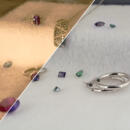
Gem in the Spotlight: Alexandrite
… the extremely rare, color-change variety of a gem species called Chrysoberyl. It appears bluish-green in daylight, fluorescent light, and some LED light. Under incandescent light, candle, and firelight, alexandrite appears purplish-red… very well, only transmitting green and red light. This means that depending on the light source the stone will reflect more of the accent colors of light. Since fluorescent light has a stronger greenish-blue component, the stone …
-
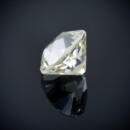
The History of Diamond Cuts
… engagement ring. Archduke Maximilian of Austria gave her a ring that was set with a point cut diamond and thin flat pieces of diamonds in the shape of an “M” in 1477. The Earliest Diamond Cuts Once it was understood that only diamond … eyes. It has anywhere from 3 to 24 facets coming to a point in the middle. But its most recognized aspect is the flat bottom. Basically, it is a crown without a pavilion. Interesting fact #2: Some diamond cuts do not have a standard …
-
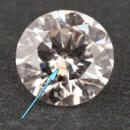
What Are Lab Grown Diamonds?
… nature made a given gem. Lab grown diamonds, on the other hand, are made in a controlled environment. They have signs of a regulated process that is not like nature. Furthermore, human efforts are not perfect and they leave their own flaws and clues that humans made a given gem. The types of inclusions and subtle variations in crystal structure are one of the main ways to differentiate between lab grown and natural diamonds. You can also learn more about how to tell …